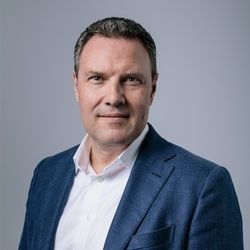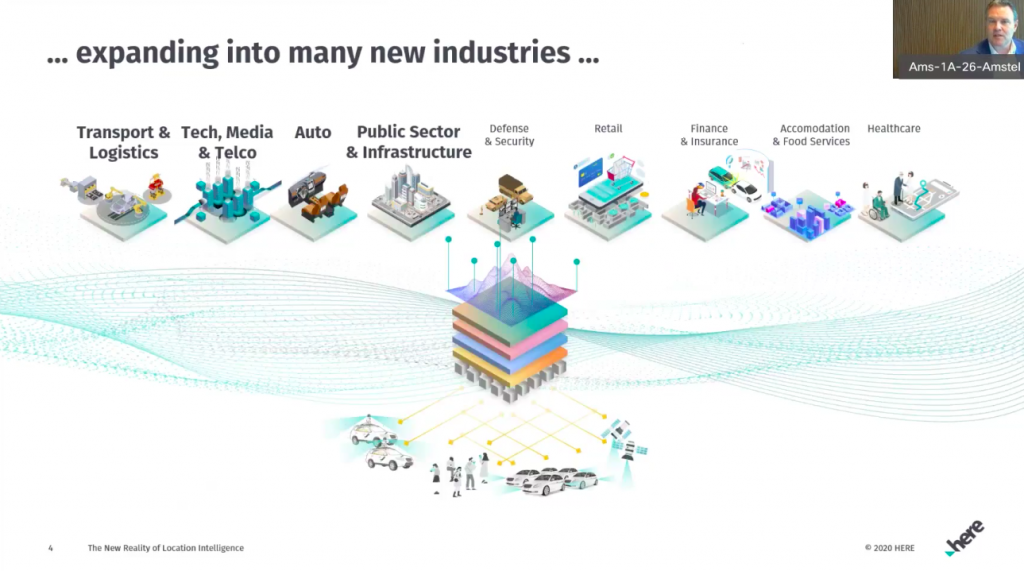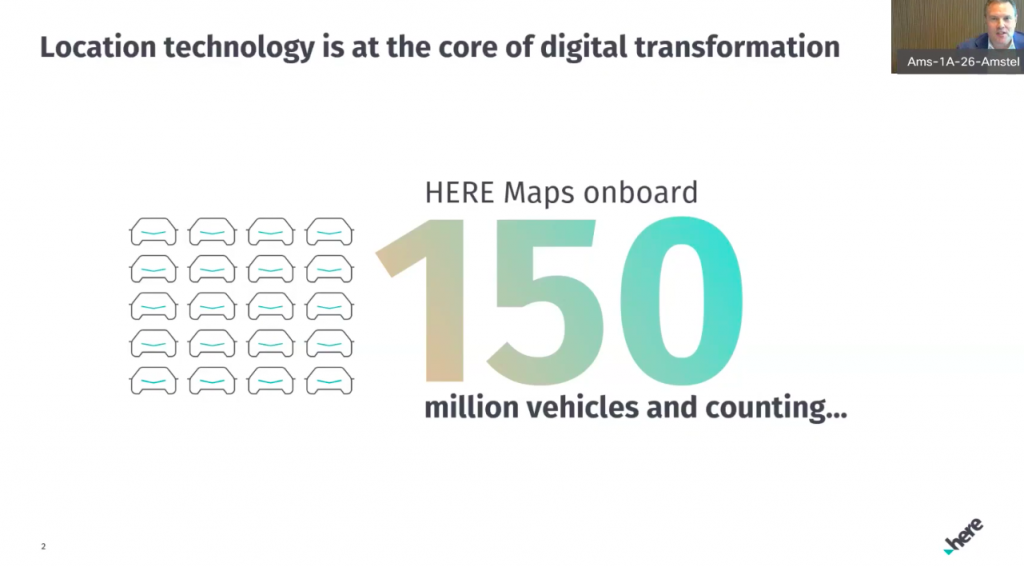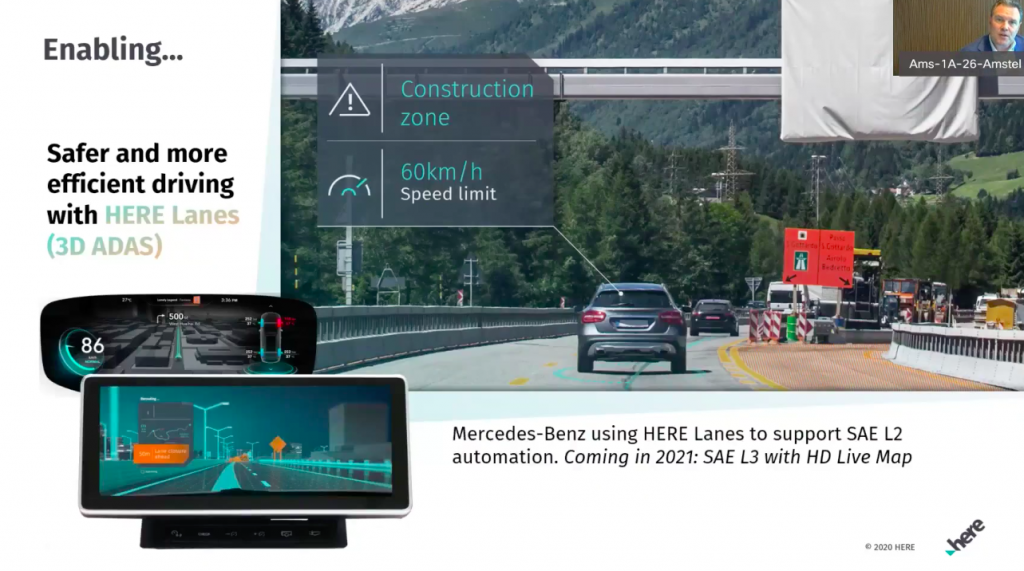
HERE has expanded its partnership in the year 2020 to tie up with some of the best and diverse names in the market such as Verizon, Ford, Bose, AccuWeather and many others, even as it reached out to more developers through its multiple developer ecosystem. Currently, the company has 356,000 direct developers, which is up an impressive 37% in 2020, and hopes to close the year with 400,000, said Edzard Overbeek, CEO, HERE Technologies. He was addressing media and analysts on September 16 as the company’s annual event, HERE Directions 2020, kicked off virtually.
Indirectly, over 3 million developers today are powered by the HERE platform – Facebook, Amazon Web Services, IBM, Redhat, Baidu, Microsoft Azure all have deep customer relationships with HERE and are using its location and positioning data for their own services on their own platforms, Overbeek added.
The grim market conditions due to the pandemic hasn’t had much bearing on the company’s business as it clocked over Euro 1 billion ($1.81 billion) in new business since January 1 till date. “I think it a major milestones and speaks about how the platform is picking up and how many customers are selecting us as their defacto location data provider.”
ALSO READ: Cartography and Cognition in the Age of Insight
Significantly, HERE got two new investors this year – Mitsubishi Corporation and NTT. The two Japanese companies announced acquisition of a 30% stake in HERE as of May 29, 2020, through a holding company which MC and NTT newly established in the Netherlands in December 2019.
“This is a very strategic move for our company because it now opens up the Asia Pacific region for us at a faster rate. It also provides us deep insights into ways to create new solutions for the Japanese markets and outside,” Overbeek said at today’s update. “This completes our vision that I had earlier spoken about – one third in automotive, one third in technologies and rest in industries like telecommunications, heavy industries, retail etc. That way we have a shareholder representation that in total represents the multi-industry approach that we have on top of our location platform.”

Besides auto, HERE is currently focusing on three major industries — transport & logistics, tech & media, and public sector infrastructure. The company has also expanded its sales force with domain expertise from these industries.
So far, HERE has mapped a total of 200 countries, making it the largest location database company in the world. It added China, South Korea and Japan to its database to make sure that the Asia Pacific region is well covered as it is one of its major growth strategies.
“If you think about the next steps that we have ahead, then clearly we are in a situation where HERE is moving towards being a true platform company and that has been a journey over the last three years,” Overbeek stated, while pointing out that currently HERE is the only location platform company that is open (presence across industries), neutral and multi cloud. He also underlined HERE’s privacy-first approach. “When GDPR was started to be implemented, we were already ready and just needed to switch. Data ownership is a very important attribute for many of our customers, and as a consumer and customer you control your data at all times.”
ALSO READ: Catch 2020 — Recovery Path for Geospatial Industry
Data sourcing getting more complex
HERE earlier had about 400 cars driving around the world with rack-mounted LiDAR video capability for taking 3D images of cities and road networks. Now, it has added new data sources.

It has over 7 billion points of probe data ingested daily and has covered 99.9% road network globally. “We are now moving into indoor mapping and three-dimensional city mapping, and eventually, with the ecosystem we are building on top of our platform we want to have a reality index — a near-real-time digital representation of indoor and outdoor of the physical world,” he added. HERE gets its probe data from over 150 million vehicles with embedded navigation. Also, it has sensor data agreements in place with many OEMs, which further helps it to accelerate the real time quality of the database at a global level.
It has 20,000-plus contracts in place with real time and static data sources coming from satellite imagery, local images or probe data, fully anonymized location data from smartphones and apps, from sensors in cars as well as IOT data. “And one of the things we have done with our platform is that creating a margin of data lake around the location attributes. This means if you have a use case in one of the industries, you can go to our platform, find the attributes that you need, select that and bill that into the automatic meter and billing system. You can then build it into your solution. This is extremely scalable and extremely fast,” Overbeek said.
New technologies showcase

Overbeek also gave a glimpse into some of the technologies that HERE is working on. For instance, it is working together with Daimler on a product called HD Lanes. This is lane demarcation at sub-centimeter-level precision where the car can completely position itself automatically, provide real time information to the driver, course correct across lanes, and assist in driving when moving from one lane to another. Mercedes Benz is using this feature to support SAE L2 automation, which is coming in 2021.
Then, HERE HD GNSS is hyper precise positioning for vehicles and subscribers on the move with. Verizon is using HD mapping and HD positioning technology from HERE to power its future 5G services. “HERE high definition positioning can provide centimeter-level precision outdoors. This can help in a use case where first responders need to travel through a city to reach an accident or emergency site. If you have real time dataset, you know exactly where the things are – you are connected to traffic lights, you understand the traffic situation in the city and you can optimize your emergency route real time,” he said. With 5G coming in, consumers will have a three-dimensional canvass for a whole bunch of use cases for safe routes and more accurate travel time. “This will come very useful not just for first responders but also for logistical companies, transportation companies, for ride share, ride hailing etc,” Overbeek pointed out.
Another interesting technology showcased was next-generation planning and design with HERE geodata models. Accenture, equipment vendors like Nokia, and telecom operators are using hyper precise 3D city models as the basis for radio frequency propagation modeling and line of sight simulations. “One of the biggest challenges in building the 5G networks is the urban footprint. You need small cell deployment every 100 meter. We have put our 3D Lidar point cloud data in the platform, and as a city planner you can access it at the click on your computer take a look at the shape of the building, the trees or the glass doors and windows to plan for 5G networks. You can triangulate on how to shoot the right signal between 5G smart cell pods,” he said.
Location is at the beginning of its journey
Stating that location data is at the very beginning of its journey,Overbeekpointed out that while the time stamp has been embedded in every major application and ERP system, the space or the location stamp is not there yet. The location industry has to move towards that direction. “With the insights in a square kilometer of macro location data giving the context and relevance between things, human beings and others, and how you derive insights from that is a complete new and open playing field. That’s where we are positioning the company and our platform,” he said.
For instance, HERE is helping smart cities to do better master planning of city infrastructure or help customers move through augmented reality with an overlay with mixed reality where one has the digital twin of the physical world. It is helping insurance companies that use real time 3D data to verify reinsurance claims — whether a building is there or if it is in the same setup and shape. “Those are just a couple out of thousands of use cases that we are looking at and we are slowly but surely releasing our platform for our customers and our partners and new prospects to play with to help them see what location data can do for them.”
"Here" - Google News
September 17, 2020 at 07:30AM
https://ift.tt/3kjdVPc
HERE upbeat on new businesses, partners and developer ecosystem, highlights CEO - Geospatial World
"Here" - Google News
https://ift.tt/39D7kKR
Shoes Man Tutorial
Pos News Update
Meme Update
Korean Entertainment News
Japan News Update
:no_upscale()/cdn.vox-cdn.com/uploads/chorus_asset/file/25244079/4.png)
No comments:
Post a Comment